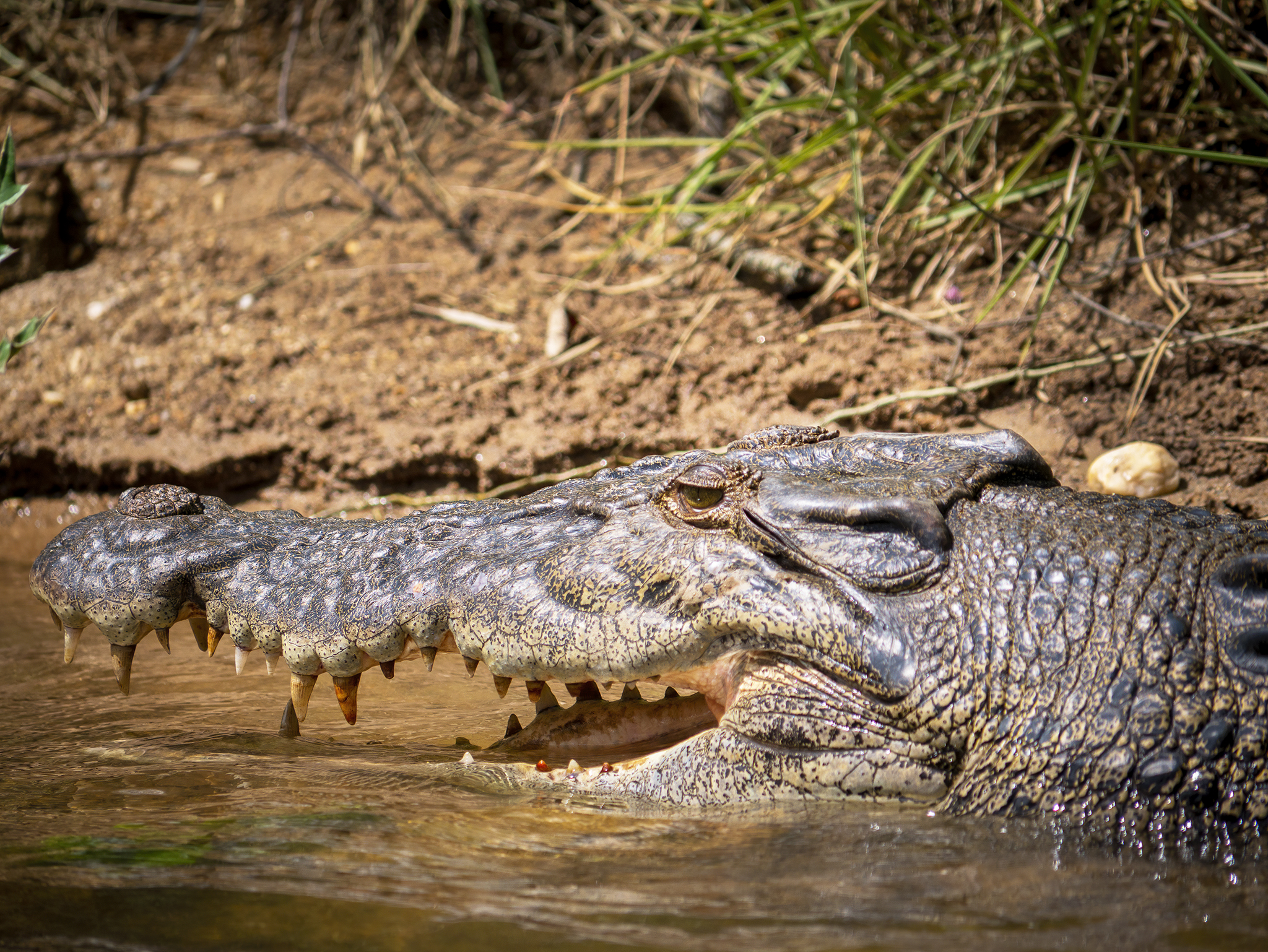Saltwater crocodiles, like these ones photographed on North Queensland’s Daintree River, are arguably the world’s most efficient predator. Growing up to 6 metres in length and often exceeding a tonne, these ferocious reptiles will hunt, kill and devour pretty much anything that crosses their path.
The saltie is such a perfect killing machine that it has remained basically unchanged over the last 240 million years of evolution. In comparison, the T-Rex evolved 84 million years ago and then went extinct 66 million years ago. Crocodiles watched the T-Rex come and go, but only after having already spent 156 million years on Earth!
(For reference, we measly Homo sapiens have only been around for 300,000 years – a mere 0.125% of the time of the saltwater croc.)
Salties will typically lie in wait at the water’s edge and then ambush their prey, dragging it under the surface and drowning it in a movement referred to as a death roll. Finally, they’ll either consume their meal whole, or store it underwater to return to later.

The larger crocodile in the photo above is Scarface – one of the dominant males on Queensland’s Daintree River. He’s four and a half metres long, around 70 years old, and has no teeth left. Despite this, if he managed to get a clean bite of your arm, it would do roughly the same damage as if you were to let it get run over by a train – no wonder Scarface still manages to fight off younger crocs and maintain status as the alpha male.
Saltwater crocodiles have the strongest bite of any animal on the planet – around 19 times stronger than yours. Hilariously, however, despite being able to crush your arm with a single bite, salties have incredibly weak jaw-opening muscles that are able to be held closed with just your hands – although I certainly wouldn’t recommend trying it!

Despite the saltwater crocodile’s impressive hunting abilities, and contrary to the wild ramblings of Bob Katter, a person is not torn to pieces by a crocodile every three months in North Queensland (or anywhere in Australia for that matter).
According to the ABS, a total of 14 people were killed by crocodiles in the period 2011-2020. In addition, the vast majority of crocodile attacks are the result of people taking unnecessary risks in croc territory. If you respect crocodiles as the apex predator that they are when you’re in their habitat – remain several metres back from the water’s edge and never swim in the Top End unless you are certain it’s safe – you’ll never have any dangerous encounters with these primordial predators.



In fact, we pose a far greater risk to crocodiles than crocodiles do to us. Throughout most of the 20th century, crocodiles were hunted in an unregulated manner for their skins, and the species which had been the world’s leading predator for 240 million years was brought to the brink of extinction in Australia. In the early 1970s, the saltwater crocodile was afforded protected status across the nation, and populations have since returned to thriving levels. In the NT alone, more than 100,000 salties inhabit the waterways, up from a mere 3,000 when conservation laws were introduced.
The story of the saltwater crocodile is one of the most successful conservation efforts in Australian history, but as numbers continue to increase, so too does the number of interactions between humans and saltwater crocodiles. Over the coming decades this story could well enter a new phase, one that will require lawmakers, politicians and conservationists to work together and make difficult decisions regarding how best to share Australia’s waterways between the country’s top two predators – the salties… and us.

–
Saltwater Crocodiles/Estuarine Crocodiles (Crocodylus porosus), Daintree River, Australia
–
PS. Baby crocodiles are ADORABLE and I won’t be engaging in any further discussion on the topic.


